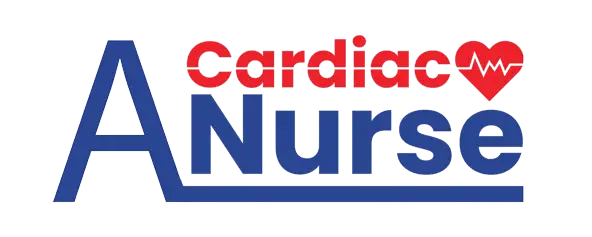10 Nursing Diagnosis Care Plans for Patients With Congestive Heart Failure

What is Congestive Heart Failure?
1. Definition:
Congestive Heart Failure occurs when the heart doesn’t pump blood as well as it should. The heart’s inability to keep up with the body’s demands leads to blood and fluid backing up into the lungs, liver, abdomen, or legs, resulting in congestion in these areas.
2. Causes:
Common causes of CHF include:
- Coronary artery disease
- High blood pressure
- Diabetes
- Heart valve problems
- Certain medications
- Infections that affect the heart
3. Symptoms:
Symptoms of CHF may include:
- Shortness of breath
- Fatigue
- Swelling in legs, ankles, and feet
- Rapid or irregular heartbeat
- Persistent cough or wheezing
- Weight gain from fluid retention
4. Types:
CHF can be categorized into:
- Left-sided CHF: This is the most common form, where the left side of the heart fails to pump enough blood into the body, causing fluid to back up into the lungs.
- Right-sided CHF: When the right side of the heart is ineffective, blood may back up into the abdomen, legs, and feet.
- Systolic heart failure: The left ventricle loses its ability to contract normally.
- Diastolic heart failure: The left ventricle loses its ability to relax normally (the heart cannot properly fill with blood during the resting period between each beat).
5. Treatment:
Treatment for CHF typically involves:
- Medications to control symptoms
- Lifestyle changes such as a low-sodium diet, exercise, and weight management
- Medical procedures or surgeries in severe cases
6. Risk Factors:
Those at higher risk for developing CHF include:
- Older adults
- Individuals with other heart conditions
- People with obesity
- Smokers
- Those with a family history of heart disease
7. Prognosis:
With proper management, many people with CHF lead a full, enjoyable life. Following treatment recommendations and lifestyle changes is crucial for managing the condition.
10 Nursing Diagnosis Care Plans for Patients With Congestive Heart Failure
Nurses play a crucial role in caring for patients with Congestive Heart Failure (CHF). Their responsibilities encompass various aspects of patient care, including assessment, intervention, education, and support. Here’s a detailed breakdown of the nurse’s role in caring for patients with CHF:
1. Assessment:
- Monitoring Vital Signs: Regular checks of blood pressure, heart rate, respiratory rate, and oxygen saturation.
- Physical Examination: Checking for signs of fluid retention such as swelling in the legs, ankles, and abdomen.
- Symptom Assessment: Observing for shortness of breath, fatigue, and other symptoms related to CHF.
- Psychosocial Assessment: Understanding the patient’s emotional and social needs.
2. Interventions:
- Medication Administration: Ensuring that medications such as diuretics, ACE inhibitors, or beta-blockers are given as prescribed.
- Fluid Management: Monitoring and managing the patient’s fluid intake and output.
- Nutritional Guidance: Encouraging a heart-healthy diet, often low in sodium.
- Assisting with Activities: Helping with daily activities and promoting exercise within the patient’s ability.
- Breathing Support: Encouraging deep breathing exercises and providing oxygen therapy as needed.
3. Education:
- Disease Process: Teaching the patient and family about CHF and what to expect.
- Medication Instruction: Providing information about medications, including how to take them, possible side effects, and what to monitor.
- Lifestyle Changes: Educating on diet, exercise, fluid restriction, weight monitoring, and smoking cessation.
- Self-Care Skills: Teaching the patient how to manage symptoms at home, including recognizing when to seek medical help.
4. Coordination of Care:
- Collaboration with Healthcare Team: Working with doctors, pharmacists, dietitians, physical therapists, and other healthcare providers to deliver comprehensive care.
- Discharge Planning: Developing a plan for ongoing care after leaving the hospital, including follow-up appointments and home care if needed.
- Referral to Specialists: If necessary, connecting the patient with specialized care such as cardiac rehabilitation.
5. Emotional Support:
- Counseling: Providing emotional support to patients and families, addressing anxiety or depression that may be associated with CHF.
- Family Involvement: Encouraging family members to participate in care and decision-making.
6. Advocacy:
- Patient Advocacy: Representing the patient’s needs and preferences within the healthcare team.
- Promoting Adherence: Encouraging compliance with treatment plans through education and support.
7. Ongoing Monitoring and Evaluation:
- Tracking Progress: Regularly evaluating the patient’s response to treatment, adjusting care plans as needed.
- Quality Improvement: Participating in efforts to improve care delivery and patient outcomes in the context of CHF.

10 Nursing Care Plans for Patients With Congestive Heart Failure
1. Diagnosis: Excess Fluid Volume
- Goal: Reduce fluid retention and prevent complications.
- Interventions and Rationale:
- Monitor daily weight – Detects early fluid retention.
- Administer diuretics as ordered – Promotes fluid excretion through urine.
- Monitor intake and output – Balances fluid status.
- Dietary restriction of sodium – Minimizes fluid retention.
- Educate patient on fluid restrictions – Enhances treatment compliance.
- Assess for edema regularly – Identifies and manages swelling.
- Outcome: Reduced fluid volume, decreased edema, and improved breathing.
2. Diagnosis: Decreased Cardiac Output
- Goal: Improve heart function.
- Interventions and Rationale:
- Monitor vital signs – Identifies abnormal heart function.
- Administer prescribed cardiac medications – Improves heart’s pumping capability.
- Assess heart sounds – Detects abnormal or changed heart rhythms.
- Encourage rest – Reduces the heart’s workload.
- Monitor for signs of decreased perfusion – Identifies poor blood flow to organs.
- Educate patient on energy-conservation techniques – Helps manage fatigue.
- Outcome: Increased cardiac output, improved circulation, and enhanced overall heart function.
3. Diagnosis: Fatigue
- Goal: Enhance energy levels.
- Interventions and Rationale:
- Encourage proper rest – Allows body recovery.
- Assist with daily tasks – Conserves patient’s energy.
- Educate on energy-conservation techniques – Enables activity participation.
- Provide nutritious meals – Boosts energy levels.
- Encourage mild exercise – Enhances stamina.
- Monitor hemoglobin and hematocrit – Detects anemia, common in CHF.
- Outcome: Increased energy levels, improved participation in daily activities.
4. Diagnosis: Activity Intolerance
- Goal: Increase tolerance to activity.
- Interventions and Rationale:
- Gradual increase in activity levels – Builds tolerance.
- Monitor response to activity – Prevents overexertion.
- Encourage regular rest periods – Avoids fatigue.
- Provide assistive devices as needed – Enables independence.
- Educate on signs of overexertion – Ensures patient awareness.
- Collaborate with physical therapy – Creates an individualized exercise plan.
- Outcome: Improved ability to engage in desired activities without undue fatigue.
5. Diagnosis: Impaired Gas Exchange
- Goal: Improve respiratory function.
- Interventions and Rationale:
- Monitor respiratory rate and oxygen saturation – Assesses respiratory function.
- Encourage deep breathing exercises – Maximizes lung expansion.
- Administer oxygen therapy as needed – Maintains adequate oxygenation.
- Position for optimal lung expansion – Aids in effective breathing.
- Assess lung sounds – Detects congestion or other issues.
- Administer bronchodilators if prescribed – Opens airways, facilitates breathing.
- Outcome: Improved oxygenation, breathing comfort, and lung function.
6. Diagnosis: Knowledge Deficit
- Goal: Enhance patient and family understanding of CHF.
- Interventions and Rationale:
- Assess current knowledge – Tailors education to patient’s needs.
- Provide educational materials – Reinforces learning.
- Teach about medications and side effects – Ensures safe medication management.
- Explain dietary and fluid restrictions – Promotes dietary guideline adherence.
- Encourage questions and discussions – Clarifies misconceptions.
- Reinforce teaching as needed – Ensures understanding and retention.
- Outcome: Improved understanding, compliance, and self-management of CHF.
7. Diagnosis: Risk for Impaired Skin Integrity
- Goal: Maintain healthy skin.
- Interventions and Rationale:
- Regular skin assessments – Detects early signs of skin breakdown.
- Encourage frequent position changes – Reduces pressure on vulnerable areas.
- Use pressure-relieving devices – Distributes pressure evenly.
- Provide proper nutrition – Supports skin healing and maintenance.
- Educate on home skin care – Encourages continued skin care at home.
- Treat existing wounds appropriately – Promotes healing.
- Outcome: Intact skin with no signs of breakdown or pressure sores.
8. Diagnosis: Anxiety
- Goal: Reduce anxiety levels.
- Interventions and Rationale:
- Assess for anxiety – Identifies presence and triggers.
- Encourage expression of feelings – Provides emotional support.
- Teach relaxation techniques – Provides tools for anxiety management.
- Provide consistent information – Alleviates fears and misconceptions.
- Include family in care and decision-making – Provides support system.
- Consider referral to mental health professional – Provides specialized care if needed.
- Outcome: Decreased anxiety levels, improved coping, and enhanced well-being.
9. Diagnosis: Noncompliance
- Goal: Enhance compliance with treatment regimen.
- Interventions and Rationale:
- Assess barriers to compliance – Understands adherence hindrances.
- Educate on importance of adherence – Emphasizes treatment significance.
- Encourage family involvement – Provides disease management support.
- Simplify medication schedule – Makes routine manageable.
- Collaborate with social work if needed – Addresses socio-economic barriers.
- Monitor and reinforce progress – Encourages ongoing commitment.
- Outcome: Increased compliance with treatment plan, prevention of exacerbations.
10. Diagnosis: Ineffective Peripheral Tissue Perfusion
- Goal: Enhance peripheral blood flow.
- Interventions and Rationale:
- Monitor extremities for color and temperature – Detects blood flow changes.
- Assess peripheral pulses – Gauges peripheral circulation adequacy.
- Encourage leg exercises – Promotes blood flow.
- Avoid crossing legs or restrictive clothing – Prevents blood flow constriction.
- Administer vasodilators if prescribed – Expands blood vessels, improves flow.
- Educate on foot care and inspection – Prevents poor perfusion-related complications.
- Outcome: Improved peripheral circulation, prevention of complications related to reduced blood flow.
10 Nursing Diagnosis Care Plans for Patients With Congestive Heart Failure
These comprehensive care plans address the main challenges of managing Congestive Heart Failure. They provide a structured approach to care, guiding the healthcare team to ensure optimal patient outcomes.
Implementation requires a holistic approach, including regular evaluation and adjustment of the plan as necessary, to meet the individual needs and responses of each patient.
Related Articles
Best transport wheelchairs
Whol medical abbreviation
Can LPN do Botox?
What is an RNC Nurse
Phyllis Robinson MSN, RN is a Registered Nurse of 27 years. Phyllis is passionate about the prevention and healing of heart disease using traditional and alternative methods. She has experience in emergency room, telemetry, infusion, and critical care. Phyllis currently practices in an intensive care unit.
